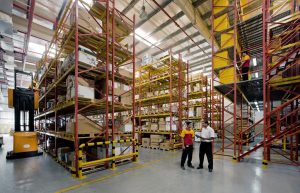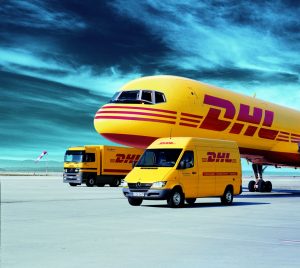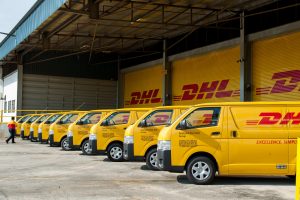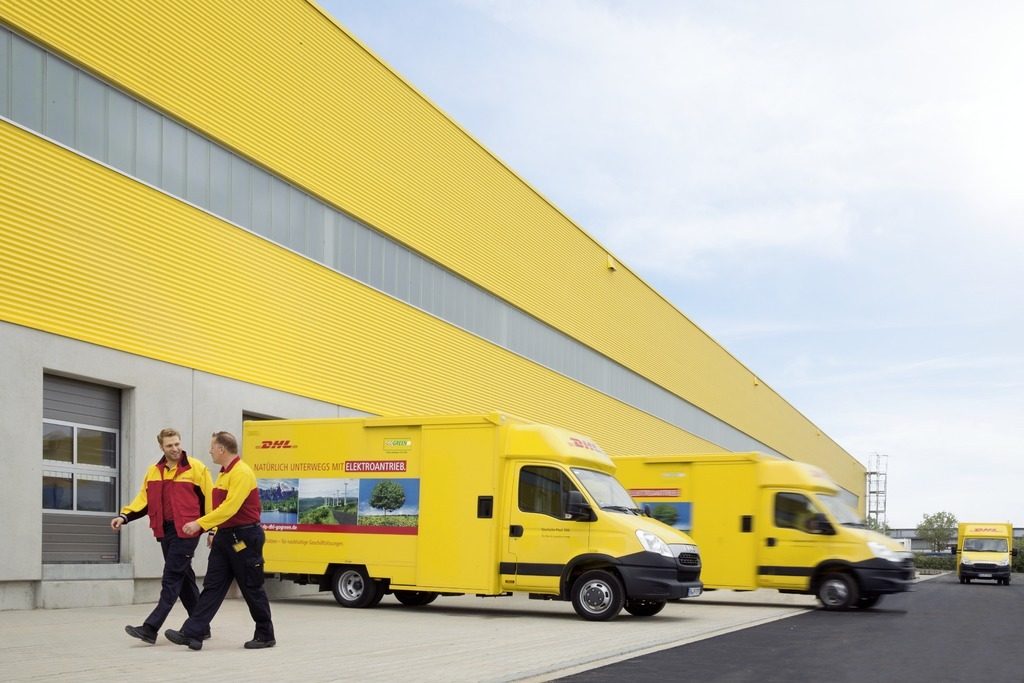DHL Supply Chain blooms rapidly in the Middle East
In August 2017, DHL Supply Chain announced an 18% increase in its Middle East revenues year to date. The company also had several large-scale agreements since the beginning of the fiscal year 2017. This included an agreement with Etihad Airways Engineering, to manage stores, local transport movements, and associated supply chain planning at the Etihad Airways Engineering hub at Abu Dhabi International Airport; a joint venture with Bahwan Cybertek in Oman; and a ten-year logistics contract with Cathay Pacific and Cathay Dragon to handle storage, warehousing, and domestic transportation of aircraft service parts at Hong Kong International Airport (HKA). As David Christmas, chief executive officer for Middle East, Russia and Turkey (MERT) at DHL Supply Chain and Head of Transport (MLEMEA) agrees, things are looking great indeed.
The supply chain market
Christmas says: Supply chain is a very significant industry for most of the countries in the Middle East. And it is changing quite rapidly. If you look at the last decade, the way warehouses were structured, the way transport fleet was runit was very basic. But now, change is driven by the economic environment. Big companies are looking to do things differently, so thats one of the main reasons our revenue has gone up so significantly.

David Christmas
Christmas attributes this progress to first time outsourcing; companies like DHL Supply Chain take over the end-to-end supply chain of big organisations. Many large businesses are turning to this now because of economic pressure. CEOs around the world are trying to cut down assets, in turn focusing more on their core objectives. A look at the Fortune 500 list clearly shows that most of the companies utilise outsourcing in one form or another, as part of their business-operating model. In 2016, UAEs supply chain and logistics industry alone touched over $25bn.
Stephen Bentley, CEO of Granby Marketing services, comments: Outsourcing can benefit companies of all sizes, but particularly organisations making the transition from start up to fully fledged business. He mentions that if done right, outsourcing can save owners a significant amount of money.
Most of the deals (in the region) either present or coming-up are what I would call significantly sized deals, says Christmas. Youre taking at least a double-figure million euros, sometimes well over 100mn each, sometimes even larger. And theyre really all about first time outsourcing opportunity. So thats where we see the growth for us.
Technology and online media
Christmas comments: Our vision is to be the most digitalised supply chain company in the world. Innovation is number two on every agenda in our business strategy at the moment, number one being safety. Weve got different innovation centres around the world, and we also work in partnerships with different universities and local businesses. And when we see something exciting, we trial it accordingly. We put different technologies in different countries, and it is the countrys responsibility to bring them up to a level of success. And when it is successful, we draw them up globally and spread them out.
 In the Middle East, DHL is currently testing products in the field of biometrics. Given the general hot environment in the region, one of the principal products that the company is working on is a high-visibility cooling vest. The vest will monitor body temperature levels of people working in outdoor environments, thereby ensuring they are not over-exposed and preventing potential heat strokes.
In the Middle East, DHL is currently testing products in the field of biometrics. Given the general hot environment in the region, one of the principal products that the company is working on is a high-visibility cooling vest. The vest will monitor body temperature levels of people working in outdoor environments, thereby ensuring they are not over-exposed and preventing potential heat strokes.
Another product that they are working on is aimed at truck drivers, monitoring their attention level while they drive.
Christmas explains: We have either the telematics system in the cab or the engine, or a transport management system which is tracking the vehicle, showing the behavior of the drivers. This allows us to utilise the capacity of the trucks better. It is all in real time now, and highly visible.
Both products are still in their pilot stage as of now. Not every product is tested for every region; robotics, for instance, is still not a part of the companys Middle East plans. The main purpose of the robot would be for value-added services, such as packaging and labelling, which is not on a large scale in the region. Christmas mentions that he was eager to test the cooling vest and transport monitoring system for the Middle East region as they seemed to be the perfect fit, given the weather and road safety strategies.
3D printing is a tech rage that has overtaken many industry sectors worldwide. Companies can find additional savings from the reduction of production waste as well as the increase of sustainable business practices through 3D printing. A study by Airbus showed that by redesigning its brackets for 3D printing, the company could achieve a 40% reduction in CO2 emissions over the lifecycle of the bracket and reduce the weight of the airplane by 10kg. 3D printing also enabled a 25% reduction in material waste compared to traditional casting methods.
But the technology hasnt yet fully immersed itself in the supply chain business. A November 2016 report by DHL mentions how 3D printing is certainly impacting the healthcare, automotive, and manufacturing industries, but it is still in developing stages. The report says that 3D printing is likely to complement rather than entirely substitute traditional manufacturing techniques; simply put, not all products can and should be 3D printed. This conclusion was echoed in a survey conducted by DHL, which revealed that 38% of companies anticipate using 3D printing in their serial production within five years but not necessarily to completely replace traditional manufacturing. In logistics, 3D printing will play a much more prominent role in the areas of spare parts logistics and individualised parts manufacturing.
 Christmas mentions: A recent, very visual picture that Ive got of one of our DHL adverts is about getting medical equipment to people in the more developing parts of the world, and theres an advert showing a boy with a prosthetic hand, which we delivered to a location in Africa. A lot of those items can now be done from a 3D printing perspective. Which is fantastic. Youve got people around the world having a better quality of life, because of that technology.
Christmas mentions: A recent, very visual picture that Ive got of one of our DHL adverts is about getting medical equipment to people in the more developing parts of the world, and theres an advert showing a boy with a prosthetic hand, which we delivered to a location in Africa. A lot of those items can now be done from a 3D printing perspective. Which is fantastic. Youve got people around the world having a better quality of life, because of that technology.
DHL Supply chain is also quite proactive online, displaying its latest tech innovations for the world to see. Their stable and constant presence online certainly ensures that the clients are kept abreast with any progress and developments. But does this mean being under relentless pressure, especially from competition, since they are out in the open?
To be frank, we dont think about the competition that much, says Christmas. Theres a reason why were the largest and customers keep coming to us. I would say our biggest competitor is ourselves. And, our only limit is our ambition to go forwards. So theres a lot of pressure on us all the time, but not really from the competition. It is more about innovation and digitalisation.
Another reason that pushes DHL to maintain a virtual presence is its younger workforce. Having been voted best employer on multiple occasions, in various industry verticals, the company tries to maintain the outlook of a digitalised company.
Specialised workforce
A 2017 DHL survey revealed that the supply chain sector is facing a talent shortage that is quickly escalating from a gap to a potential crisis. The U.S. Bureau of Labor Statistics reports that jobs in logistics are estimated to grow by 26% between 2010 and 2020, while another global study estimates that demand for supply chain professionals exceeds supply by a ratio of six to one. The situation is worsened by the exodus of baby boomers from the workforce. Some studies assert that 25-33% of the current supply chain workforce is at or beyond retirement age, and the backfill pipeline is inadequate to satisfy replenishment demand. Leading companies understand they must act to resolve this situation, or face the effects of having the wrong kind of talent to run their supply chains. The potential consequences are worrying in some industries, the talent gap could threaten the ability of companies to compete on the global stage.
 Christmas, however, believes that talent gap isnt that big a worry in this part of the world. He says: I dont think there is a talent gap in the Middle East, and I really believe that. I think there is a huge amount of enthusiasm, and the passion in the business to make things happen is very different. If you go to operations in the UAE, or in Muscat, or Saudi, the level of energy and positivity is generally immense. A lot of that is coming from the localisation agenda in nearly every country in the Gulf, probably every country. People like ourselves are given a sort of target to get to for local employment. And that fills the talent gap.
Christmas, however, believes that talent gap isnt that big a worry in this part of the world. He says: I dont think there is a talent gap in the Middle East, and I really believe that. I think there is a huge amount of enthusiasm, and the passion in the business to make things happen is very different. If you go to operations in the UAE, or in Muscat, or Saudi, the level of energy and positivity is generally immense. A lot of that is coming from the localisation agenda in nearly every country in the Gulf, probably every country. People like ourselves are given a sort of target to get to for local employment. And that fills the talent gap.
People are keen to work for a good brand, a company that looks after its people. And theyre keen to work for companies that give them a sort of an international exposure. My problem isnt the talent. My problem is that Ive got so many people ready for a promotion, needing to win more business so they can go to the next level, and I really mean that. It is sort of the reverse.
The industry has known for years that it has an image problem. The widespread perception, especially in emerging markets, is this: supply chain is not as good a career as one in finance, operations, manufacturing, product development, marketing, or sales. While the industry has worked hard to change this perception, judging by the DHL survey results, it still has a long way to go. Only 25% of the survey participants said their company views supply chain as equally important as other disciplines, and 59% of the participants reported having difficulty retaining talent.
Christmas believes this view needs to change. He explains that supply chain personnel are perceived to be head-focused, process oriented, and logical.
Which arent bad traits to have as an employee! says Christmas. But, we probably need a bit more heart in there, so we encourage our people to go the extra mile, connect with customers more closely, so were doing a lot of work on that.
 He adds: We push for an emotional connection, so if weve got a delivery with heart valves in it or vaccines, we encourage the employees not to see it as just a box. We know theres someone receiving it at the end of the journey. Theres a customer at the end, maybe it is someone who is on an operating table. It could be an engineer waiting at a refinery to fix a certain element, or maybe someone waiting for a Christmas present. But all of it has meaning, and if we inspire that meaning with our employeeswhich were very good atwe create that meaning with our customers.
He adds: We push for an emotional connection, so if weve got a delivery with heart valves in it or vaccines, we encourage the employees not to see it as just a box. We know theres someone receiving it at the end of the journey. Theres a customer at the end, maybe it is someone who is on an operating table. It could be an engineer waiting at a refinery to fix a certain element, or maybe someone waiting for a Christmas present. But all of it has meaning, and if we inspire that meaning with our employeeswhich were very good atwe create that meaning with our customers.
I dont know every industry in the world, but I think it (supply chain) is one of the best industries in the world, one of the most enjoyable. We are stuck with an image which is not as progressive as it should be, and it is up to us to change that. Most people that join us dont go anywhere else. Someone asked me the other day, if I would want to be on the six-o-five train from Reading to Paddington in the UK, going to my consultancy office somewhere. The answer would definitely be no. Id rather be flying through the night to Toronto to meet a customer, and review their supply chain. The thrill of standing in an airport one day, a port the other day, the next day youre in Chennai, and the day after youre in Muscat, and you keep going! I think its hugely challenging, and all the more exciting.





